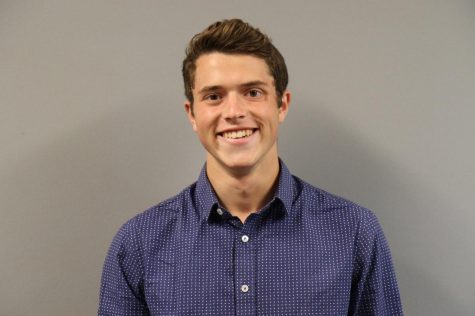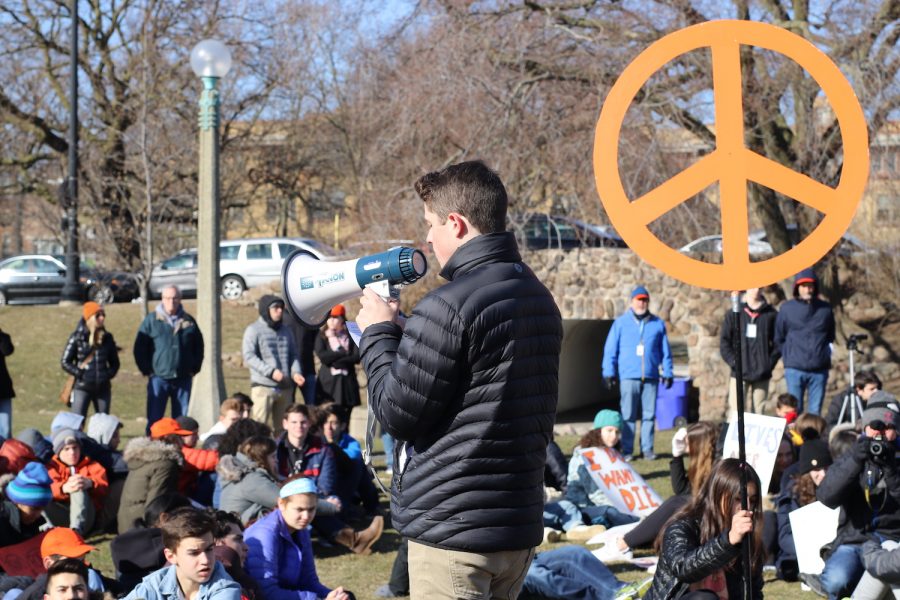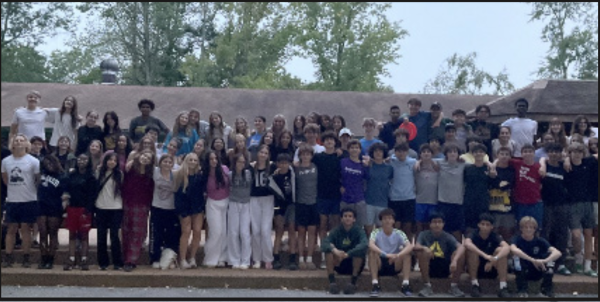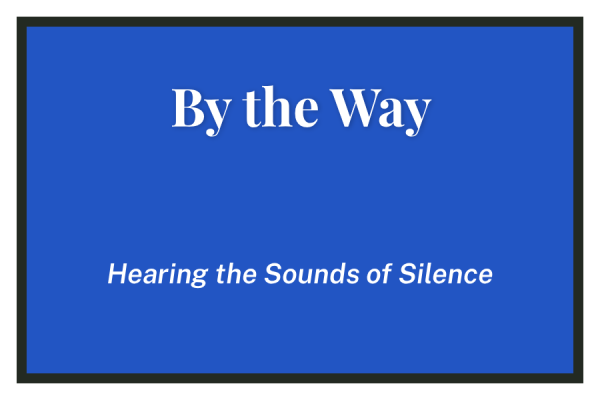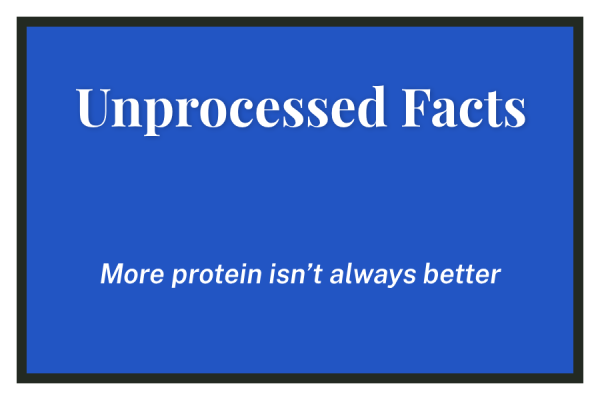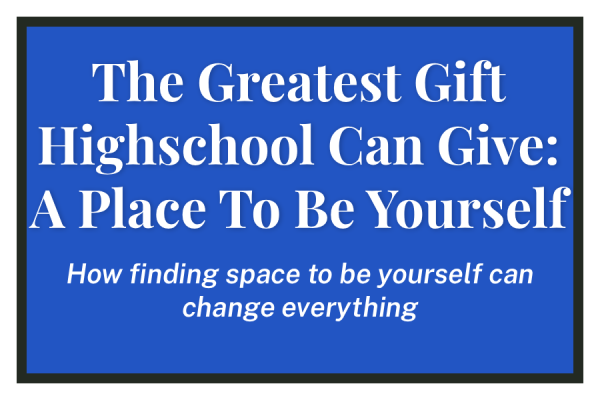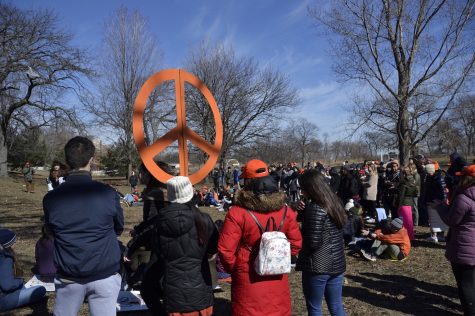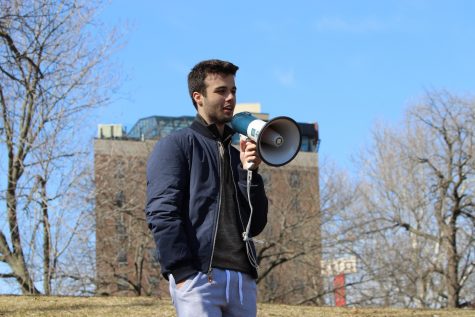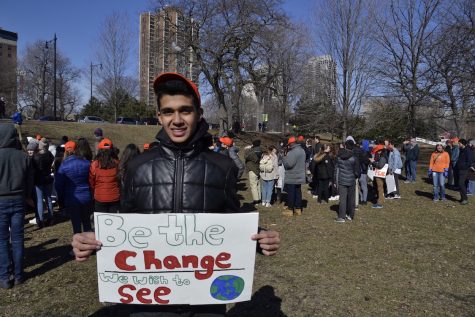Locking Down for Our Lives
How Lockdown Drills Aid Empathy for School Shootings
Photo credit: Sarah-Jayne Austin
Sammy Kagan, the author, reads “Letter Beginning with Two Lines” by Czesław Miłosz just before students came together to observe 17 minutes of silence in honor of the Parkland victims. The tribute took place roughly a week after the lockdown drill.
On the streets of Lincoln Park, gun violence is often made out to be an issue of “the other.” Whereas petty theft and burglaries occur on a regular basis, gun violence, people think, is foreign–a reality dealt with by those unfortunate enough to find themselves in the parts of our city and country that face corrosive gun violence on a daily basis.
According to “Gun Violence in Chicago, 2016,” published by the University of Chicago Crime Lab, the neighborhood of Lincoln Park had a homicide rate of 0 per 100,000 residents. Not a single individual was deliberately or unlawfully killed in Parker’s neighborhood last year–a neighborhood known for its wealth, family values, and general safety. A shooting in Lincoln Park, one could say, is as out of place as a dolphin in Kansas.
With experiences in line with mine, in line with the majority of Parker students, it may be difficult to empathize with the victims of drive-by shootings, let alone entire communities decimated in a single day by a mass killing. An inability to understanding Parkland, Newtown, and Columbine on an emotional level places an emotional barrier between me–between many other students around the country–and those for whom we stood, learned, and rallied on Wednesday.
On Friday, March 9, at around 10:00 am, that barrier got just a little bit weaker.
The entire school participated in a lockdown drill. An active shooter drill. Students as young as four and as old as eighteen sat together, in a sense, for nearly fifteen minutes, forced to ponder the terms of their mutual existence.
We’ve had lockdown drills before, all the time really, but it was then–in the aftermath of Parkland–that I realized the significance of our actions. It took my sitting, propped up against a shelf in a classroom nook, and seeing my peers gathered to realize the reality of the situation.
We were preparing for a shooter. There are no two ways about it. The positions we were in mirrored those of victims of Parkland, Newtown, Columbine, and hundreds of others, and there was just something–an intangible, indescribable something–terrifying about that.
It’s one thing to talk about the school shootings and another to honor the dead, but placing ourselves in the positions that thousands of innocent school children were in at the time of their death? Heartbreaking. Gut-wrenching. World-shattering.
But unlike students at Marjory Stoneman Douglas, Sandy Hook, and Columbine, Parker students got to carry on with their lives after those short minutes. We weren’t forced to suffer loses or forever have our school, neighborhood, and routine associated with mass death.
For a moment, though, I finally started to understand gun violence on an emotional level. Upon realizing why we were the way that we were, I started to comprehend the sheer terror which each and every student must have felt as they died.
Nobody should ever have to prepare and train as we did, and no child should ever die in distress and fear. Each and every gun-related death in Chicago and across the country is preventable. This is why I stand. This is why I demand change. This is why I march.
